URBAN FOLIAGE _ an infrastructural landscape operating in two scales:
In the macro scale it provides a thickened ground that orchestrates events and activities and regulates the area`s microclimate with strategic vegetation, while in the micro scale it forms a prototypical shelter, which is proliferated and differentiated according to programmatic needs, forming a shadow protector, a weather regulator (heat in the winter and protection from the wind and rain) and a welcoming relaxation point for strollers and city flaneurs…
DESIGN STRATEGY
Foliage: in botany foliage [mass noun for a leaf] are laminar plant organs which evolved in a way to maximize their surface area exposed to light and air, enhance their ability to store water and provide shade. To achieve these, the inner structure of a leaf comprises from a vascular tissue of Veins in various pattern formations. These palmate-netted patterns form around a primary mid-vein subdividing into veinlets. The veinlets then create a pattern that stretches to the leaf edges, creating an inter-connected two-way network that transports water and minerals from the roots into the leaf and, vice-versa, dissolved sucrose, produced by photosynthesis, out of the leaf. These principals, from an Urban Metabolism point of view, combined with the ecologic principle of sustainability form the basis of our architectural design proposal for an urban park, thus named Urban Foliage.
The constant blending and interchanging between urban and natural landscape is orchestrated around two interconnected systems of green enclaves (Green Network) that intensify new urban possibilities along with events (Cultural Network).
Green network. Differentiated typologies of vegetated pattern are integrated into the region with the proximities to a dry / Mediterranean riparian landscape. The aim is to intensify physical connections to the surrounding while also formulate vistas and use green as a strategy for orientation and direction towards the site.
Urban Cultural network. The deployment of a new urban thickened ground brings the urban scene on multiple levels. The embedded program acts in synergy with the new topography and the circulation patterns, redirecting vistas and facilitating orientation on site with a primary decision not to “frame” the square but to enable free gaze on the surrounding public buildings.
MASTERPLAN LAYOUT
In the macro scale it provides a thickened ground that orchestrates events and activities and regulates the area`s microclimate with strategic vegetation, while in the micro scale it forms a prototypical shelter, which is proliferated and differentiated according to programmatic needs, forming a shadow protector, a weather regulator (heat in the winter and protection from the wind and rain) and a welcoming relaxation point for strollers and city flaneurs…
DESIGN STRATEGY
Foliage: in botany foliage [mass noun for a leaf] are laminar plant organs which evolved in a way to maximize their surface area exposed to light and air, enhance their ability to store water and provide shade. To achieve these, the inner structure of a leaf comprises from a vascular tissue of Veins in various pattern formations. These palmate-netted patterns form around a primary mid-vein subdividing into veinlets. The veinlets then create a pattern that stretches to the leaf edges, creating an inter-connected two-way network that transports water and minerals from the roots into the leaf and, vice-versa, dissolved sucrose, produced by photosynthesis, out of the leaf. These principals, from an Urban Metabolism point of view, combined with the ecologic principle of sustainability form the basis of our architectural design proposal for an urban park, thus named Urban Foliage.
The constant blending and interchanging between urban and natural landscape is orchestrated around two interconnected systems of green enclaves (Green Network) that intensify new urban possibilities along with events (Cultural Network).
Green network. Differentiated typologies of vegetated pattern are integrated into the region with the proximities to a dry / Mediterranean riparian landscape. The aim is to intensify physical connections to the surrounding while also formulate vistas and use green as a strategy for orientation and direction towards the site.
Urban Cultural network. The deployment of a new urban thickened ground brings the urban scene on multiple levels. The embedded program acts in synergy with the new topography and the circulation patterns, redirecting vistas and facilitating orientation on site with a primary decision not to “frame” the square but to enable free gaze on the surrounding public buildings.
MASTERPLAN LAYOUT
FOLIAGE PLAZA
The Foliage plaza defines primary circulation and movement in the plot, connecting all the surrounding routs with numerous different directions, providing a bypass on the ‘AΛEA’ cultural route of Nicosia. The central part of the plaza creates an elevated amphitheatric viewpoint acting as a “panopticon”.
This elevated plaza, a gently sloped terrain made accessible for all, connects the program of the plot that stretches from the Gallery to the Follies, the Cafes, the Taverns and the GSP Point Central. Program, structures and canopies therefore create a large unified plaza for gatherings and open exhibitions separated only by vegetation and plantation. The plaza overlooks down to three clusters that also accommodate events, interacting with them and creating a unified yet diverse urban space unlike other in Nicosia.
The Foliage plaza defines primary circulation and movement in the plot, connecting all the surrounding routs with numerous different directions, providing a bypass on the ‘AΛEA’ cultural route of Nicosia. The central part of the plaza creates an elevated amphitheatric viewpoint acting as a “panopticon”.
This elevated plaza, a gently sloped terrain made accessible for all, connects the program of the plot that stretches from the Gallery to the Follies, the Cafes, the Taverns and the GSP Point Central. Program, structures and canopies therefore create a large unified plaza for gatherings and open exhibitions separated only by vegetation and plantation. The plaza overlooks down to three clusters that also accommodate events, interacting with them and creating a unified yet diverse urban space unlike other in Nicosia.
CLUSTERS
Cluster 1: National Theatre Plaza [Πλατεία ΘΟΚ]. A dynamic oval shaped plaza adjacent to/and at the level of the new National Theatre offers the public place a grandeur building requires to function, while the column-like arcade geometry of the plaza perimeter re-negotiates the lower level of the theatre creating a unified outcome.
Cluster 2: the Urban Stage [Σκηνή Πόλης]. Located at the corner of Evagorou & Gr. Afxentiou Str, with walkable inclination for easy access it is inspired by urban inclined piazzas like Piazza del Campo. With the National Theatre façade acting as background and facing north to avoid sun glare, it functions as an access gateway plaza. A vegetated berm protects it visually and acoustically from road traffic. It is an urban theatre for orchestrated or spontaneous events can take place. The gallery’s west façade functions as a projection panel for the events.
Cluster 3: The Spring Grove Park [Αστικό Άλσος] is a forest enclave with rich species of Mediterranean woodland, shrubs and crawling plantations on retaining walls. It accounts for the 15% of the overall plot, located on Vas. Pavlou str, a quiet and safe road front, creating an idyllic green shelter for café and playground.
GSP Point Central. Around the center of the GSP plot, where the old stadium’s kickoff used to be, a covered area of 1275m² is created on the level of the three clusters. Protected throughout the year from sun or rain by the foliage, it functions as a busy crossroad between the clusters, connecting them on eye level, allowing people to move freely between them. In this network hub of high accessibility and traffic we place a commercial centre, dubbed GSP Central Point: a well-lit, aerated space and shaded environment of a 24h open diverse multi-functioning space.
GSP Clock. The old stadium clock is maintained on same height and street, is incorporated in a new structure and placed by the entrance of the urban stage theatre nearby the gallery, where it becomes an integral part of the events yet still visible from pedestrians and motorists passing by.
VEGETATION | GREEN AREAS | SHADING STRATEGY
The proposed landscape comprises of Mediterranean species requiring little maintenance and irrigation. The proposal maintains a few trees that are noted on the periphery and introduces a larger variety of plant species to endorse bio diversity and seasonal variation. We introduce the following green types: 1.Linear Shade Trees, 2. Dense Mediterranean Enclaves, 3. The Spring Grove, 4. Mediterranean planting beds, 5. Vines on Canopies.
By locating all unexcavated areas on the low east level of the plot we take advantage of the site’s inclination thus having up to 2,5m depth of soil on the Gr.Afxentiou corner. By also locating the taverns on top of the parking ramp our proposal generates around 3200m2 of high plantation, which is near to 25% of the plot. The overall plantation (high and low) is over 35% of the plot.
The proposal’s shading strategy aims to maintain the Foliage Plaza as a unified open-air space and not to create permanent shading structures that obstruct views or divide the plaza, considering also that we place 1275m² of shaded environment on the GSP Central Point level. Understanding, though, the need for protection from Cyprus’ sun we provide natural shade through continuous linear canopies.
MATERIALS | HARD SURFACES
To avoid high thermal absorption we deploy three hard surface materials: 1.Concrete unit pavers (semi permeable), 2.Bound Gravel with Sand and Clay mix (material from existing site), 3.Loose Gravel (fully permeable).
On exposed areas of the foliage, we use Bound Gravel mixed with concrete pavers producing a result that escapes thermal discomfort in summer and is aesthetically pleasing due to its decorative natural appearance. It is durable, requires low maintenance and anti-slippery.
A mixture of Bound and Loose Gravel is used in the clusters of the National Theatre Plaza and the Spring Grove. At the Urban Stage we use concrete pavers for better acoustics and urban look.
PROGRAM DISTRIBUTION
The urban foliage proposal incorporates the program inside the landscape minimizing the building footprint without producing, though, ‘basement buildings’ by ensuring for all primary program areas sufficient natural light and ventilation. By integrating, therefore, program and landscape we generate, on both levels, 13.000m² of open public areas, which is the same size of the overall plot, while accommodating 3200m² of building areas, more than required.
Gallery. The main building at the entrance of the plaza directs functions visitors towards the interior network while acting as landmark and info point for events. Its large cantilever façade functions as a giant projection screen on both sides, connecting the ground (Urban Stage) and elevated areas (Foliage Plaza) by orienting views to the façade and thus towards each other.
Taverns. The two taverns are located on ground and elevated floor, on Vas. Pavlou Str where other existing restaurants and cafes are located, at a quiet environment overlooking into the Spring Grove Park. A planted roof terrace is created on top for open-air dining during summer nights, along with dining areas inside the park and on a big 1st floor balcony.
Follies. On the east edge of the foliage, a series of canopies, integrated into the landscape, ‘extend’ in order to harbor program instead of vines. Thus a linear shaded arcade of follies is generated incorporating shops which include a kiosk, a florist, a bookstore and a cafeteria serving the Foliage Plaza and the Spring Grove.
Cafeterias. Evenly distributed in four spots throughout the site, two serve the elevated level and two the ground level, covering all 3 clusters, the galleries and the GSP Point Central.
Shops. Three shops are located centrally in GSP Point Central area, centrally located between the three clusters, on the passage with the highest traffic.
Entertainment / Recreation areas. 1000m² of program uses, distributed between Internet Cafes, Electronic Games, Billiards and Bowling Area, are created south of GSP Point Central.
UNDERGROUND PARKING | STRUCTURAL PRINCIPALS
It is organized in four levels hosting 1500 parking places (5% for handicapped). A 6m lane on the perimeter organizes circulation and three one-way 4,2m corridors give access to the diagonal parking places. Seven vertical cores provide access to the ground floor and elevated plaza. Main access ramps and ramps for lower levels are separated for better circulation.
To secure the parking’s deep excavation the retaining system “Berlin Wall Technique” is used with a raft foundation stiffened by beams. The parking places requirements strictly define the columns grid therefore the superstructure’s columns are planted the parking’s roof which consists a “foundation slab”. All over-ground building structures are made out of steel while their exterior finish thin Fiber-C concrete panels that have long durability and minimum maintenance requirements.
ENERGY STRATEGY
As a joint project between government and private investors, reducing energy demand is essential to make the investment viable. Below is a preliminary energy demand assessment:
Cluster 1: National Theatre Plaza [Πλατεία ΘΟΚ]. A dynamic oval shaped plaza adjacent to/and at the level of the new National Theatre offers the public place a grandeur building requires to function, while the column-like arcade geometry of the plaza perimeter re-negotiates the lower level of the theatre creating a unified outcome.
Cluster 2: the Urban Stage [Σκηνή Πόλης]. Located at the corner of Evagorou & Gr. Afxentiou Str, with walkable inclination for easy access it is inspired by urban inclined piazzas like Piazza del Campo. With the National Theatre façade acting as background and facing north to avoid sun glare, it functions as an access gateway plaza. A vegetated berm protects it visually and acoustically from road traffic. It is an urban theatre for orchestrated or spontaneous events can take place. The gallery’s west façade functions as a projection panel for the events.
Cluster 3: The Spring Grove Park [Αστικό Άλσος] is a forest enclave with rich species of Mediterranean woodland, shrubs and crawling plantations on retaining walls. It accounts for the 15% of the overall plot, located on Vas. Pavlou str, a quiet and safe road front, creating an idyllic green shelter for café and playground.
GSP Point Central. Around the center of the GSP plot, where the old stadium’s kickoff used to be, a covered area of 1275m² is created on the level of the three clusters. Protected throughout the year from sun or rain by the foliage, it functions as a busy crossroad between the clusters, connecting them on eye level, allowing people to move freely between them. In this network hub of high accessibility and traffic we place a commercial centre, dubbed GSP Central Point: a well-lit, aerated space and shaded environment of a 24h open diverse multi-functioning space.
GSP Clock. The old stadium clock is maintained on same height and street, is incorporated in a new structure and placed by the entrance of the urban stage theatre nearby the gallery, where it becomes an integral part of the events yet still visible from pedestrians and motorists passing by.
VEGETATION | GREEN AREAS | SHADING STRATEGY
The proposed landscape comprises of Mediterranean species requiring little maintenance and irrigation. The proposal maintains a few trees that are noted on the periphery and introduces a larger variety of plant species to endorse bio diversity and seasonal variation. We introduce the following green types: 1.Linear Shade Trees, 2. Dense Mediterranean Enclaves, 3. The Spring Grove, 4. Mediterranean planting beds, 5. Vines on Canopies.
By locating all unexcavated areas on the low east level of the plot we take advantage of the site’s inclination thus having up to 2,5m depth of soil on the Gr.Afxentiou corner. By also locating the taverns on top of the parking ramp our proposal generates around 3200m2 of high plantation, which is near to 25% of the plot. The overall plantation (high and low) is over 35% of the plot.
The proposal’s shading strategy aims to maintain the Foliage Plaza as a unified open-air space and not to create permanent shading structures that obstruct views or divide the plaza, considering also that we place 1275m² of shaded environment on the GSP Central Point level. Understanding, though, the need for protection from Cyprus’ sun we provide natural shade through continuous linear canopies.
MATERIALS | HARD SURFACES
To avoid high thermal absorption we deploy three hard surface materials: 1.Concrete unit pavers (semi permeable), 2.Bound Gravel with Sand and Clay mix (material from existing site), 3.Loose Gravel (fully permeable).
On exposed areas of the foliage, we use Bound Gravel mixed with concrete pavers producing a result that escapes thermal discomfort in summer and is aesthetically pleasing due to its decorative natural appearance. It is durable, requires low maintenance and anti-slippery.
A mixture of Bound and Loose Gravel is used in the clusters of the National Theatre Plaza and the Spring Grove. At the Urban Stage we use concrete pavers for better acoustics and urban look.
PROGRAM DISTRIBUTION
The urban foliage proposal incorporates the program inside the landscape minimizing the building footprint without producing, though, ‘basement buildings’ by ensuring for all primary program areas sufficient natural light and ventilation. By integrating, therefore, program and landscape we generate, on both levels, 13.000m² of open public areas, which is the same size of the overall plot, while accommodating 3200m² of building areas, more than required.
Gallery. The main building at the entrance of the plaza directs functions visitors towards the interior network while acting as landmark and info point for events. Its large cantilever façade functions as a giant projection screen on both sides, connecting the ground (Urban Stage) and elevated areas (Foliage Plaza) by orienting views to the façade and thus towards each other.
Taverns. The two taverns are located on ground and elevated floor, on Vas. Pavlou Str where other existing restaurants and cafes are located, at a quiet environment overlooking into the Spring Grove Park. A planted roof terrace is created on top for open-air dining during summer nights, along with dining areas inside the park and on a big 1st floor balcony.
Follies. On the east edge of the foliage, a series of canopies, integrated into the landscape, ‘extend’ in order to harbor program instead of vines. Thus a linear shaded arcade of follies is generated incorporating shops which include a kiosk, a florist, a bookstore and a cafeteria serving the Foliage Plaza and the Spring Grove.
Cafeterias. Evenly distributed in four spots throughout the site, two serve the elevated level and two the ground level, covering all 3 clusters, the galleries and the GSP Point Central.
Shops. Three shops are located centrally in GSP Point Central area, centrally located between the three clusters, on the passage with the highest traffic.
Entertainment / Recreation areas. 1000m² of program uses, distributed between Internet Cafes, Electronic Games, Billiards and Bowling Area, are created south of GSP Point Central.
UNDERGROUND PARKING | STRUCTURAL PRINCIPALS
It is organized in four levels hosting 1500 parking places (5% for handicapped). A 6m lane on the perimeter organizes circulation and three one-way 4,2m corridors give access to the diagonal parking places. Seven vertical cores provide access to the ground floor and elevated plaza. Main access ramps and ramps for lower levels are separated for better circulation.
To secure the parking’s deep excavation the retaining system “Berlin Wall Technique” is used with a raft foundation stiffened by beams. The parking places requirements strictly define the columns grid therefore the superstructure’s columns are planted the parking’s roof which consists a “foundation slab”. All over-ground building structures are made out of steel while their exterior finish thin Fiber-C concrete panels that have long durability and minimum maintenance requirements.
ENERGY STRATEGY
As a joint project between government and private investors, reducing energy demand is essential to make the investment viable. Below is a preliminary energy demand assessment:
| Activity | Area (m2) | Consumption Benchmark | Energy Consumption | ||
| Gas | Electricity | Gas | Electricity | ||
| Cafes / Bars | 600 | 211 | 715 | 126,577 | 429,000 |
| Tavernas | 600 | 401 | 715 | 240,747 | 429,000 |
| Shops | 350 | 0 | 484 | 0 | 168,400 |
| Galleries | 350 | 42 | 63 | 14,767 | 21,945 |
| Service Facilities | 100 | 32 | 25 | 3,158 | 2,530 |
| Public Space | 10,000 | 32 | 25 | 31,584 | 25,300 |
| Car Park | 41,250 | 0 | 8 | 0 | 330,000 |
| Guard Room | 20 | 25 | 147 | 490 | 2,944 |
| Car Wash – Office | 15 | 25 | 147 | 368 | 2,208 |
| Car Wash – waiting | 15 | 25 | 147 | 368 | 2,208 |
| Car Wash – Stores | 15 | 14 | 3 | 205 | 52 |
| Car Wash – Machines | 15 | 14 | 3 | 205 | 52 |
| Stores | 135 | 14 | 3 | 1,842 | 466 |
| Toilets | 50 | 32 | 25 | 1,579 | 1,265 |
| TOTAL KWh | 421,889 | 1,416,369 | |||
Based on this demand we determine the renewable energy generation required to make the proposals carbon neutral and choose the appropriate source.
Photo-Voltaic Panels
With a large solar resource available in Nicosia, we preferably choose Solar Power and estimate below the PVs array size required to generate the energy consumed by the site:
| Total Energy Demand (kWh | 1,838,258 |
| PV Output (kwh/m2) | 2,069 |
| Array size (m2) | 888 |
We also incorporate geothermic principles taking advantage of the unexcavated area and by extracting the water 10m below, passing it through concrete soffits and walkways. Then it is either returned to the ground, or used with rainwater for irrigation.
Therefore, reducing the overall energy demand for PVs by 25%, the remaining (south facing) 680m², are allocated: 350 on gallery roof and façade panels, 170 facades and roof of taverns, and 140m² on canopy-structures instead of vines.
URBAN FOLIAGE
Team:Fereos + Associates Architects
Pavlos Fereos, Design Leader – Architect NTUA, MPhil NTUA, MArch AA DRL
Myrto Lambrou, Architect AUTh
Collaborators
Io Ioanna Karydi, Landscape Planner – Architect NTUA, MA AA
Giorgos Patsoumas, Architect NTUA
PAVLOS FEREOS, [Dipl. Arch NTUA, MPhil NTUA, MArch AA.DRL], studied Architecture in Athens Polytechnic where he completed also graduate studies before moving to London at AA Design Research Laboratory in “Parametric Urbanism”. He’s a UCL PhD candidate in the field of parametric design with working title “Educating Hidden Geometry”, while he teaches at MArch Graduate Architectural Design in Bartlett. He’s partner at Fereos + Associates Architects, with numerous projects in Cyprus and Greece. He’s been awarded several prizes in Architectural competitions, including 1st (Dherynia City Hall) and 2nd prizes (Larnaca Public Market).
IOANNA IO KARYDI NTUA, MA AA (LU), is an architect and urban designer based in Athens and an Associate Landscape Architect for Hargreaves Associates. She is a graduate of NTUA and MA graduate with Distinction on Landscape Urbanism at the AA. She has taught at the Architectural Association, the University of Patras and the University of Athens. She has been involved in several projects that include the award winning New Campus of Montpellier and the design of the Olympic Park for London 2012. Her research interests focus on environmental processes and the appropriation and integration of physical systems into the urban space. For more information see: www.iocarydi.com
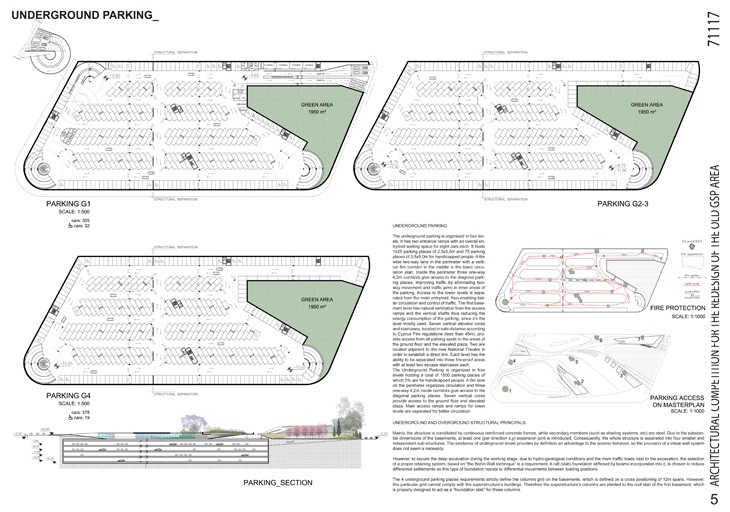 ΑΡΧΙΤΕΚΤΟΝΙΚΟΣ ΔΙΑΓΩΝΙΣΜΟΣ ΓΙΑ ΤΗΝ ΑΝΑΠΛΑΣΗ ΤΟΥ ΧΩΡΟΥ ΤΟΥ ΠΑΛΙΟΥ Γ.Σ.Π. ΚΩΔΙΚΟΣ ΣΥΜΜΕΤΟΧΗΣ: 71117
ΑΡΧΙΤΕΚΤΟΝΙΚΟΣ ΔΙΑΓΩΝΙΣΜΟΣ ΓΙΑ ΤΗΝ ΑΝΑΠΛΑΣΗ ΤΟΥ ΧΩΡΟΥ ΤΟΥ ΠΑΛΙΟΥ Γ.Σ.Π. ΚΩΔΙΚΟΣ ΣΥΜΜΕΤΟΧΗΣ: 71117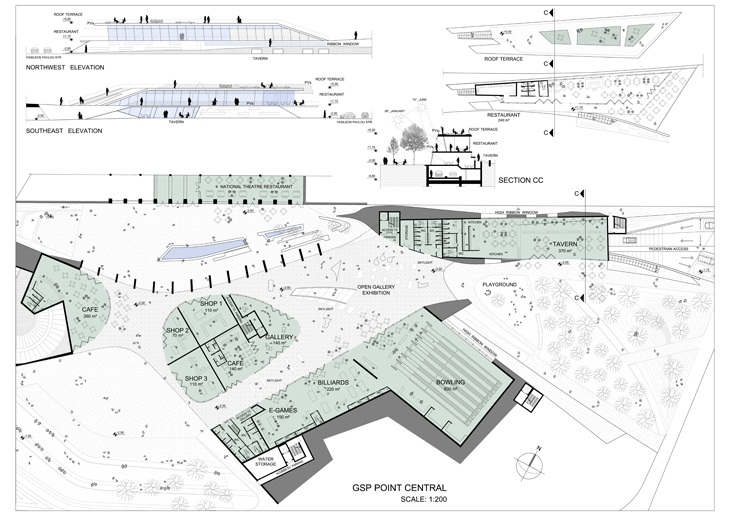 ΑΡΧΙΤΕΚΤΟΝΙΚΟΣ ΔΙΑΓΩΝΙΣΜΟΣ ΓΙΑ ΤΗΝ ΑΝΑΠΛΑΣΗ ΤΟΥ ΧΩΡΟΥ ΤΟΥ ΠΑΛΙΟΥ Γ.Σ.Π. ΚΩΔΙΚΟΣ ΣΥΜΜΕΤΟΧΗΣ: 71117
ΑΡΧΙΤΕΚΤΟΝΙΚΟΣ ΔΙΑΓΩΝΙΣΜΟΣ ΓΙΑ ΤΗΝ ΑΝΑΠΛΑΣΗ ΤΟΥ ΧΩΡΟΥ ΤΟΥ ΠΑΛΙΟΥ Γ.Σ.Π. ΚΩΔΙΚΟΣ ΣΥΜΜΕΤΟΧΗΣ: 71117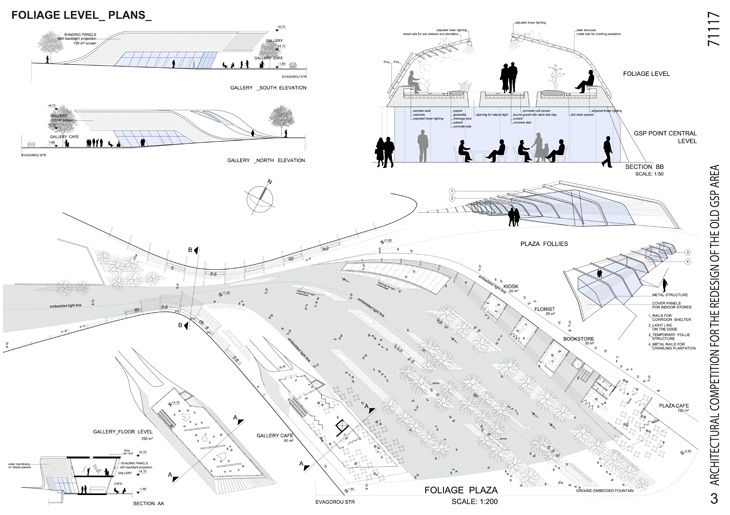 ΑΡΧΙΤΕΚΤΟΝΙΚΟΣ ΔΙΑΓΩΝΙΣΜΟΣ ΓΙΑ ΤΗΝ ΑΝΑΠΛΑΣΗ ΤΟΥ ΧΩΡΟΥ ΤΟΥ ΠΑΛΙΟΥ Γ.Σ.Π. ΚΩΔΙΚΟΣ ΣΥΜΜΕΤΟΧΗΣ: 71117
ΑΡΧΙΤΕΚΤΟΝΙΚΟΣ ΔΙΑΓΩΝΙΣΜΟΣ ΓΙΑ ΤΗΝ ΑΝΑΠΛΑΣΗ ΤΟΥ ΧΩΡΟΥ ΤΟΥ ΠΑΛΙΟΥ Γ.Σ.Π. ΚΩΔΙΚΟΣ ΣΥΜΜΕΤΟΧΗΣ: 71117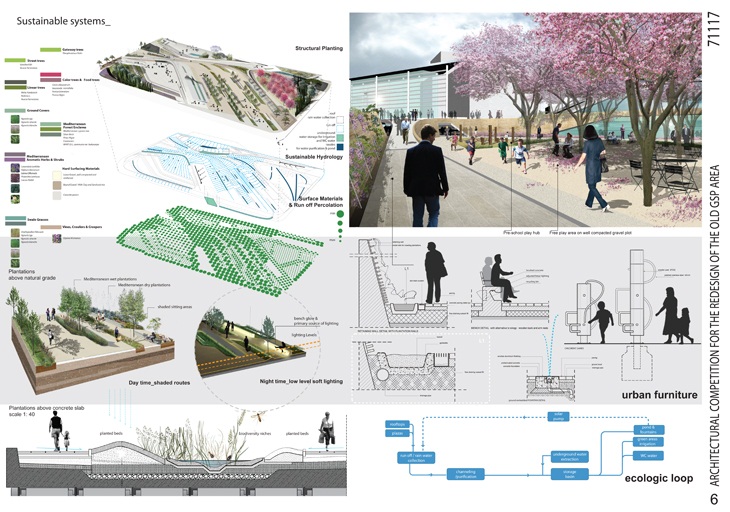 ΑΡΧΙΤΕΚΤΟΝΙΚΟΣ ΔΙΑΓΩΝΙΣΜΟΣ ΓΙΑ ΤΗΝ ΑΝΑΠΛΑΣΗ ΤΟΥ ΧΩΡΟΥ ΤΟΥ ΠΑΛΙΟΥ Γ.Σ.Π. ΚΩΔΙΚΟΣ ΣΥΜΜΕΤΟΧΗΣ: 71117
ΑΡΧΙΤΕΚΤΟΝΙΚΟΣ ΔΙΑΓΩΝΙΣΜΟΣ ΓΙΑ ΤΗΝ ΑΝΑΠΛΑΣΗ ΤΟΥ ΧΩΡΟΥ ΤΟΥ ΠΑΛΙΟΥ Γ.Σ.Π. ΚΩΔΙΚΟΣ ΣΥΜΜΕΤΟΧΗΣ: 71117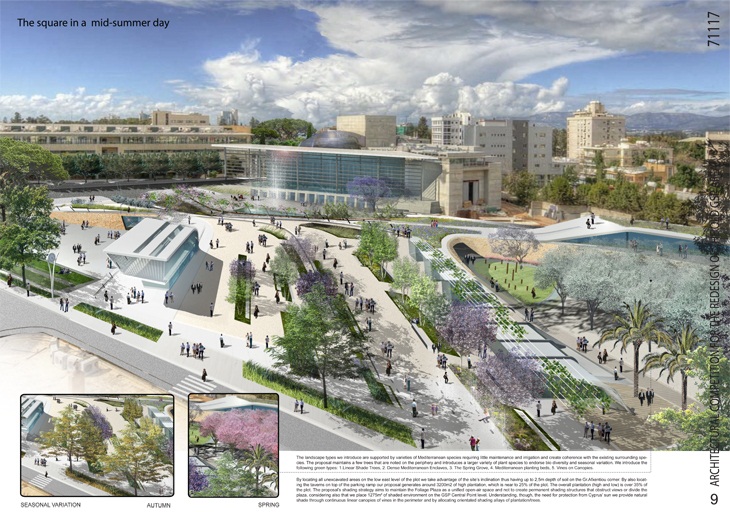 ΑΡΧΙΤΕΚΤΟΝΙΚΟΣ ΔΙΑΓΩΝΙΣΜΟΣ ΓΙΑ ΤΗΝ ΑΝΑΠΛΑΣΗ ΤΟΥ ΧΩΡΟΥ ΤΟΥ ΠΑΛΙΟΥ Γ.Σ.Π. ΚΩΔΙΚΟΣ ΣΥΜΜΕΤΟΧΗΣ: 71117
ΑΡΧΙΤΕΚΤΟΝΙΚΟΣ ΔΙΑΓΩΝΙΣΜΟΣ ΓΙΑ ΤΗΝ ΑΝΑΠΛΑΣΗ ΤΟΥ ΧΩΡΟΥ ΤΟΥ ΠΑΛΙΟΥ Γ.Σ.Π. ΚΩΔΙΚΟΣ ΣΥΜΜΕΤΟΧΗΣ: 71117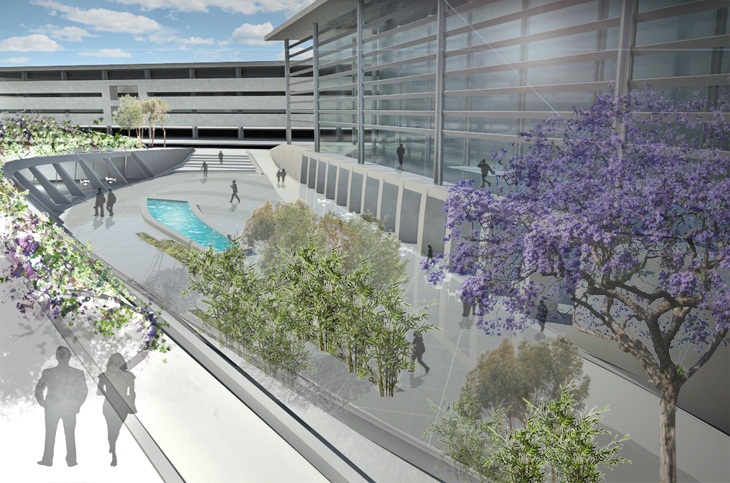 ΑΡΧΙΤΕΚΤΟΝΙΚΟΣ ΔΙΑΓΩΝΙΣΜΟΣ ΓΙΑ ΤΗΝ ΑΝΑΠΛΑΣΗ ΤΟΥ ΧΩΡΟΥ ΤΟΥ ΠΑΛΙΟΥ Γ.Σ.Π. ΚΩΔΙΚΟΣ ΣΥΜΜΕΤΟΧΗΣ: 71117
ΑΡΧΙΤΕΚΤΟΝΙΚΟΣ ΔΙΑΓΩΝΙΣΜΟΣ ΓΙΑ ΤΗΝ ΑΝΑΠΛΑΣΗ ΤΟΥ ΧΩΡΟΥ ΤΟΥ ΠΑΛΙΟΥ Γ.Σ.Π. ΚΩΔΙΚΟΣ ΣΥΜΜΕΤΟΧΗΣ: 71117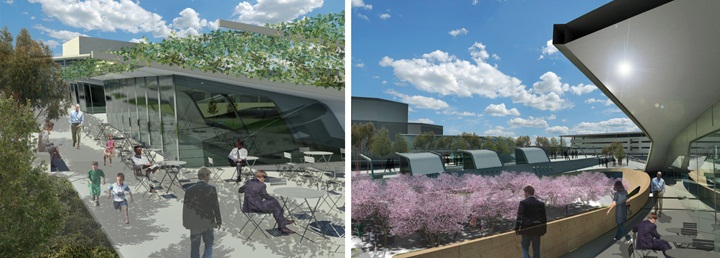 ΑΡΧΙΤΕΚΤΟΝΙΚΟΣ ΔΙΑΓΩΝΙΣΜΟΣ ΓΙΑ ΤΗΝ ΑΝΑΠΛΑΣΗ ΤΟΥ ΧΩΡΟΥ ΤΟΥ ΠΑΛΙΟΥ Γ.Σ.Π. ΚΩΔΙΚΟΣ ΣΥΜΜΕΤΟΧΗΣ: 71117
ΑΡΧΙΤΕΚΤΟΝΙΚΟΣ ΔΙΑΓΩΝΙΣΜΟΣ ΓΙΑ ΤΗΝ ΑΝΑΠΛΑΣΗ ΤΟΥ ΧΩΡΟΥ ΤΟΥ ΠΑΛΙΟΥ Γ.Σ.Π. ΚΩΔΙΚΟΣ ΣΥΜΜΕΤΟΧΗΣ: 71117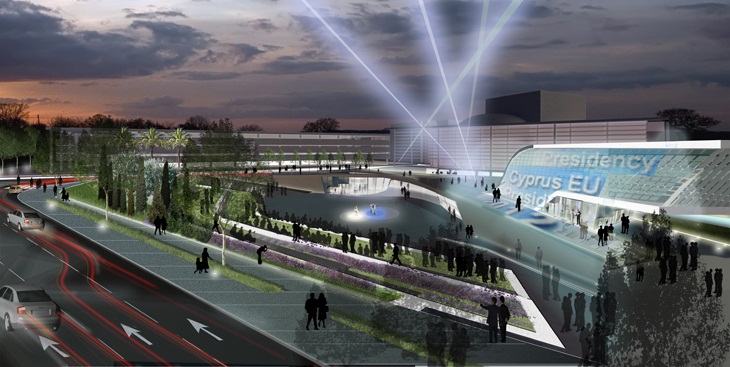 ΑΡΧΙΤΕΚΤΟΝΙΚΟΣ ΔΙΑΓΩΝΙΣΜΟΣ ΓΙΑ ΤΗΝ ΑΝΑΠΛΑΣΗ ΤΟΥ ΧΩΡΟΥ ΤΟΥ ΠΑΛΙΟΥ Γ.Σ.Π. ΚΩΔΙΚΟΣ ΣΥΜΜΕΤΟΧΗΣ: 71117
ΑΡΧΙΤΕΚΤΟΝΙΚΟΣ ΔΙΑΓΩΝΙΣΜΟΣ ΓΙΑ ΤΗΝ ΑΝΑΠΛΑΣΗ ΤΟΥ ΧΩΡΟΥ ΤΟΥ ΠΑΛΙΟΥ Γ.Σ.Π. ΚΩΔΙΚΟΣ ΣΥΜΜΕΤΟΧΗΣ: 71117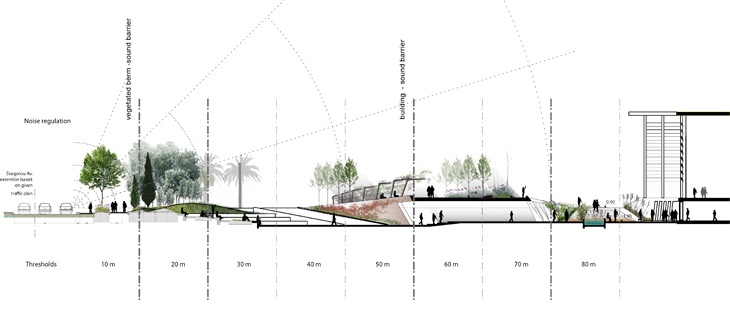 ΑΡΧΙΤΕΚΤΟΝΙΚΟΣ ΔΙΑΓΩΝΙΣΜΟΣ ΓΙΑ ΤΗΝ ΑΝΑΠΛΑΣΗ ΤΟΥ ΧΩΡΟΥ ΤΟΥ ΠΑΛΙΟΥ Γ.Σ.Π. ΚΩΔΙΚΟΣ ΣΥΜΜΕΤΟΧΗΣ: 71117
ΑΡΧΙΤΕΚΤΟΝΙΚΟΣ ΔΙΑΓΩΝΙΣΜΟΣ ΓΙΑ ΤΗΝ ΑΝΑΠΛΑΣΗ ΤΟΥ ΧΩΡΟΥ ΤΟΥ ΠΑΛΙΟΥ Γ.Σ.Π. ΚΩΔΙΚΟΣ ΣΥΜΜΕΤΟΧΗΣ: 71117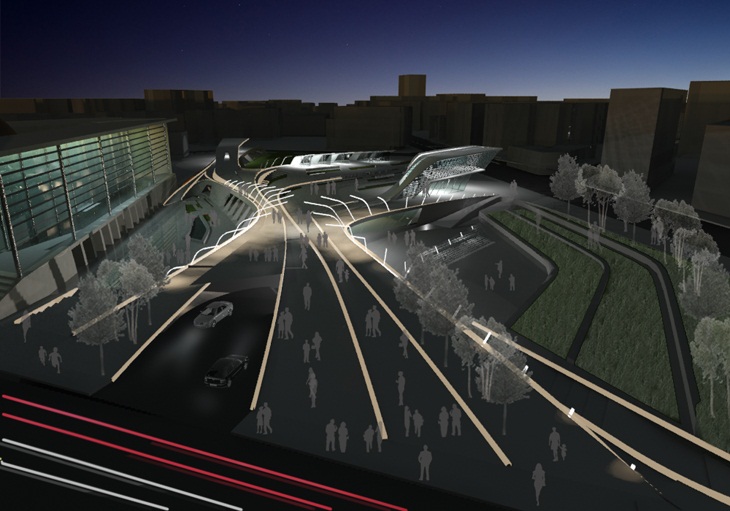 ΑΡΧΙΤΕΚΤΟΝΙΚΟΣ ΔΙΑΓΩΝΙΣΜΟΣ ΓΙΑ ΤΗΝ ΑΝΑΠΛΑΣΗ ΤΟΥ ΧΩΡΟΥ ΤΟΥ ΠΑΛΙΟΥ Γ.Σ.Π. ΚΩΔΙΚΟΣ ΣΥΜΜΕΤΟΧΗΣ: 71117
ΑΡΧΙΤΕΚΤΟΝΙΚΟΣ ΔΙΑΓΩΝΙΣΜΟΣ ΓΙΑ ΤΗΝ ΑΝΑΠΛΑΣΗ ΤΟΥ ΧΩΡΟΥ ΤΟΥ ΠΑΛΙΟΥ Γ.Σ.Π. ΚΩΔΙΚΟΣ ΣΥΜΜΕΤΟΧΗΣ: 71117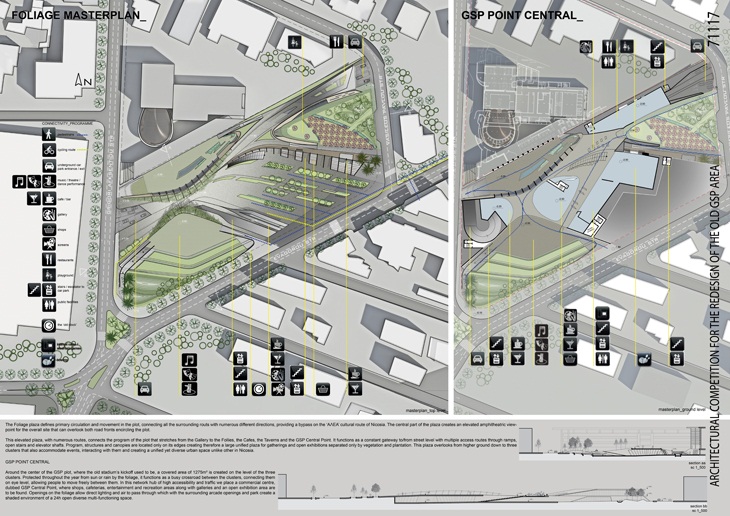 ΑΡΧΙΤΕΚΤΟΝΙΚΟΣ ΔΙΑΓΩΝΙΣΜΟΣ ΓΙΑ ΤΗΝ ΑΝΑΠΛΑΣΗ ΤΟΥ ΧΩΡΟΥ ΤΟΥ ΠΑΛΙΟΥ Γ.Σ.Π. ΚΩΔΙΚΟΣ ΣΥΜΜΕΤΟΧΗΣ: 71117
ΑΡΧΙΤΕΚΤΟΝΙΚΟΣ ΔΙΑΓΩΝΙΣΜΟΣ ΓΙΑ ΤΗΝ ΑΝΑΠΛΑΣΗ ΤΟΥ ΧΩΡΟΥ ΤΟΥ ΠΑΛΙΟΥ Γ.Σ.Π. ΚΩΔΙΚΟΣ ΣΥΜΜΕΤΟΧΗΣ: 71117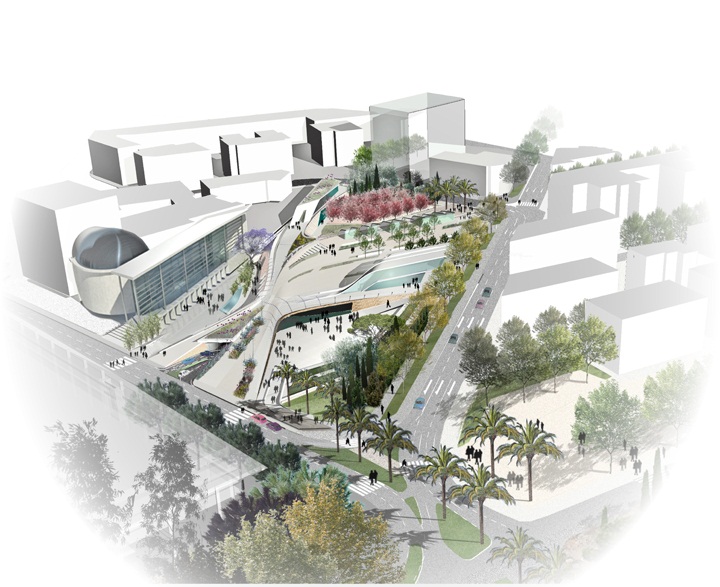 ΑΡΧΙΤΕΚΤΟΝΙΚΟΣ ΔΙΑΓΩΝΙΣΜΟΣ ΓΙΑ ΤΗΝ ΑΝΑΠΛΑΣΗ ΤΟΥ ΧΩΡΟΥ ΤΟΥ ΠΑΛΙΟΥ Γ.Σ.Π. ΚΩΔΙΚΟΣ ΣΥΜΜΕΤΟΧΗΣ: 71117
ΑΡΧΙΤΕΚΤΟΝΙΚΟΣ ΔΙΑΓΩΝΙΣΜΟΣ ΓΙΑ ΤΗΝ ΑΝΑΠΛΑΣΗ ΤΟΥ ΧΩΡΟΥ ΤΟΥ ΠΑΛΙΟΥ Γ.Σ.Π. ΚΩΔΙΚΟΣ ΣΥΜΜΕΤΟΧΗΣ: 71117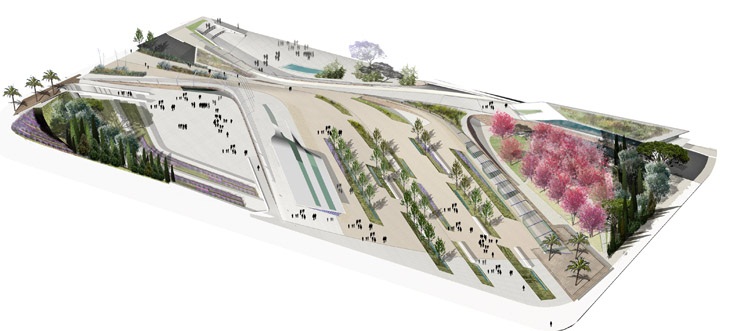 ΑΡΧΙΤΕΚΤΟΝΙΚΟΣ ΔΙΑΓΩΝΙΣΜΟΣ ΓΙΑ ΤΗΝ ΑΝΑΠΛΑΣΗ ΤΟΥ ΧΩΡΟΥ ΤΟΥ ΠΑΛΙΟΥ Γ.Σ.Π. ΚΩΔΙΚΟΣ ΣΥΜΜΕΤΟΧΗΣ: 71117
ΑΡΧΙΤΕΚΤΟΝΙΚΟΣ ΔΙΑΓΩΝΙΣΜΟΣ ΓΙΑ ΤΗΝ ΑΝΑΠΛΑΣΗ ΤΟΥ ΧΩΡΟΥ ΤΟΥ ΠΑΛΙΟΥ Γ.Σ.Π. ΚΩΔΙΚΟΣ ΣΥΜΜΕΤΟΧΗΣ: 71117 ΑΡΧΙΤΕΚΤΟΝΙΚΟΣ ΔΙΑΓΩΝΙΣΜΟΣ ΓΙΑ ΤΗΝ ΑΝΑΠΛΑΣΗ ΤΟΥ ΧΩΡΟΥ ΤΟΥ ΠΑΛΙΟΥ Γ.Σ.Π. ΚΩΔΙΚΟΣ ΣΥΜΜΕΤΟΧΗΣ: 71117
ΑΡΧΙΤΕΚΤΟΝΙΚΟΣ ΔΙΑΓΩΝΙΣΜΟΣ ΓΙΑ ΤΗΝ ΑΝΑΠΛΑΣΗ ΤΟΥ ΧΩΡΟΥ ΤΟΥ ΠΑΛΙΟΥ Γ.Σ.Π. ΚΩΔΙΚΟΣ ΣΥΜΜΕΤΟΧΗΣ: 71117READ ALSO: LAB / ΤΙΜΗΤΙΚΗ ΔΙΑΚΡΙΣΗ ΣΤΟΝ ΔΙΑΓΩΝΙΣΜΟ XII THYSSENKRUPP ELEVATOR ARCHITECTURE AWARD